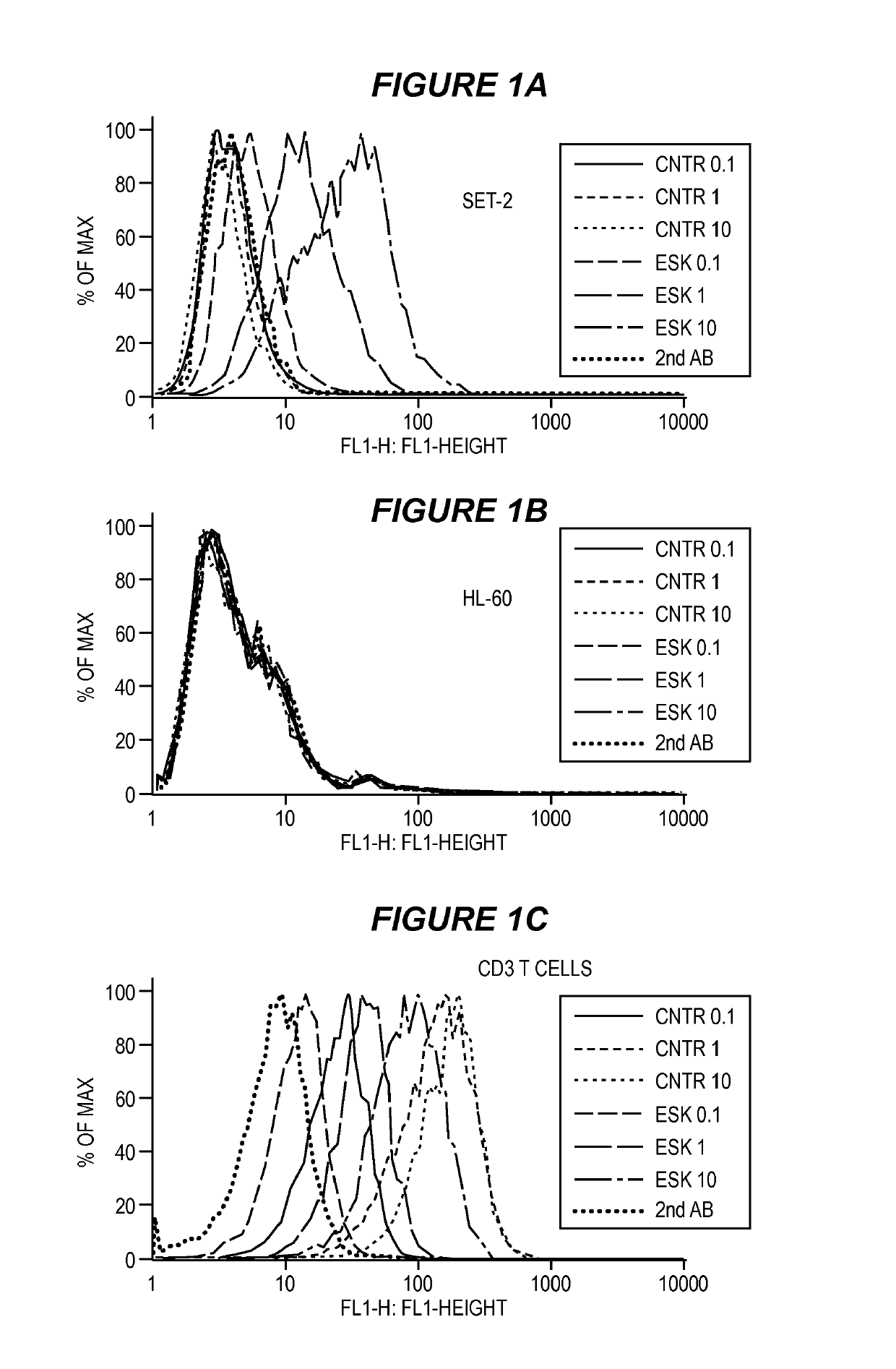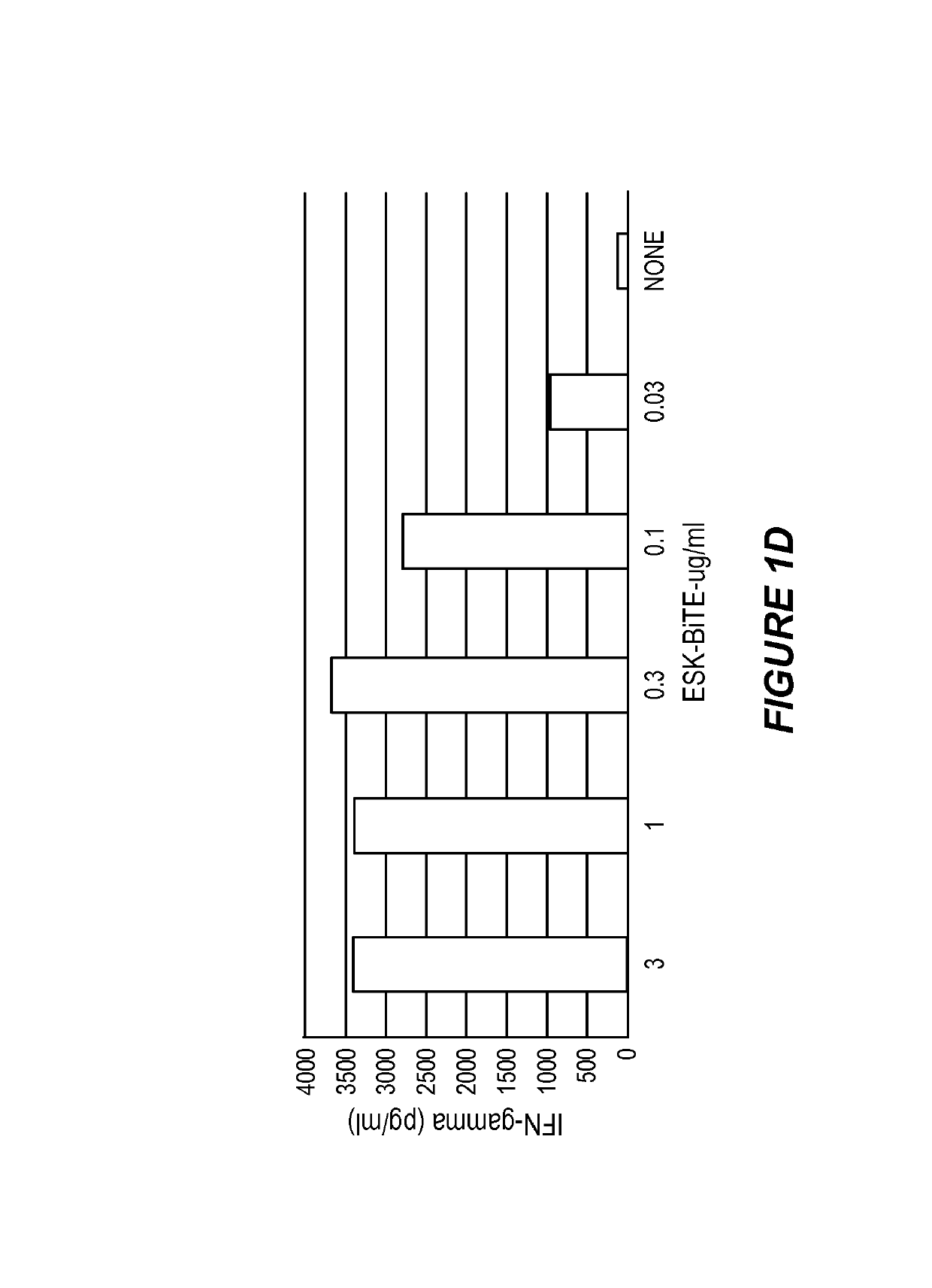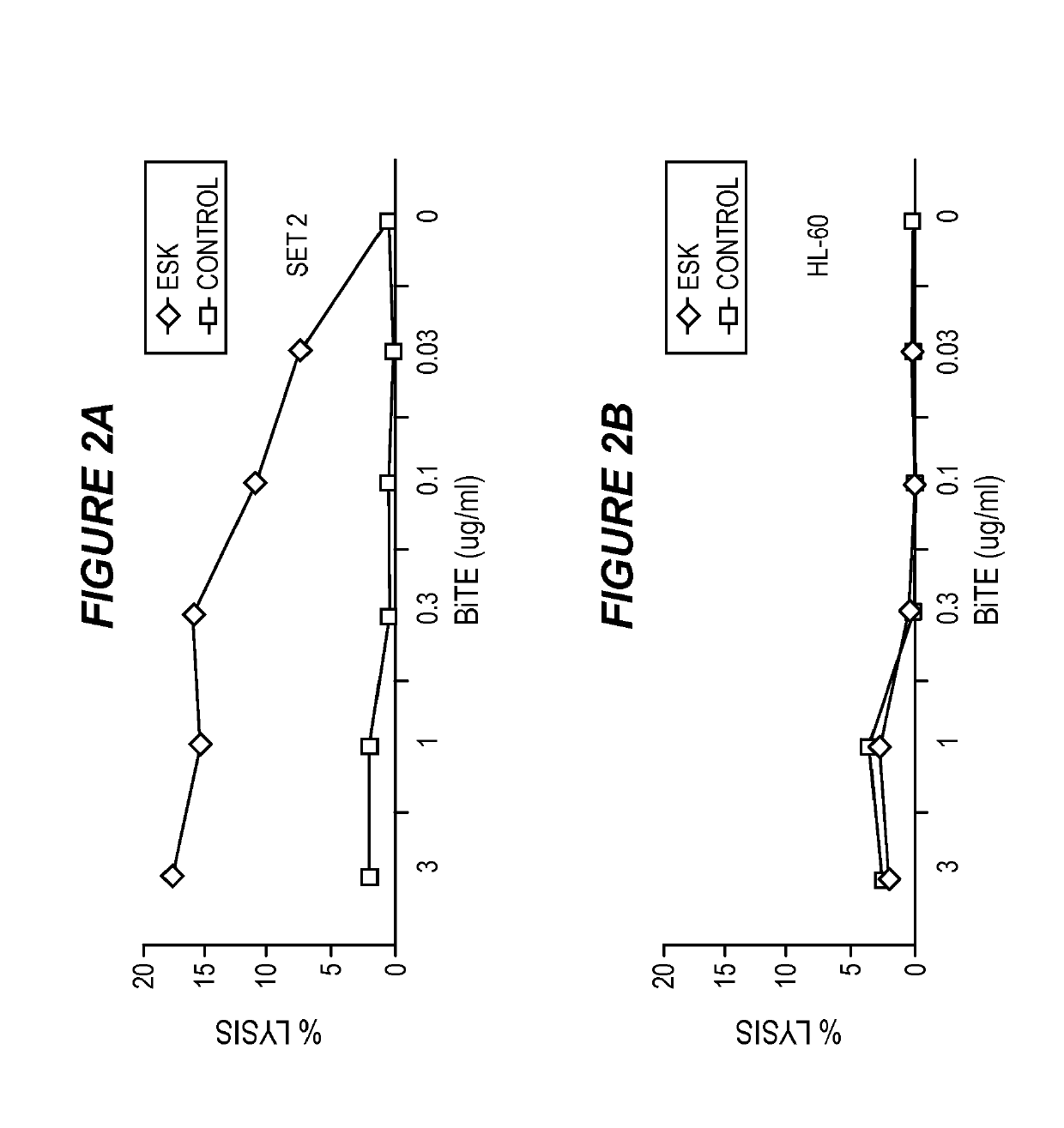Anti-WT1/HLA bi-specific antibody
a bi-specific antibody and cytosolic protein technology, applied in the field of anti-cytosolic protein antibodies, can solve the problems of limited success, many approaches aimed at triggering, and attempted mhc complexes, and achieve the effect of potent therapeutic activity
- Summary
- Abstract
- Description
- Claims
- Application Information
AI Technical Summary
Benefits of technology
Problems solved by technology
Method used
Image
Examples
example
Materials and Methods
[0144]Cell Samples, Cell Lines and Antibodies.
[0145]Peripheral blood mononuclear cells (PBMCs) from HLA-typed healthy donors and patients were obtained by Ficoll density centrifugation. The sources for obtaining human leukemia and solid tumor cell lines were described previously (Dao et al., supra). The cell lines for this study included: AML lines HL60, SET-2, Ph+ ALL line BV173, mesothelioma cell lines JMN and MSTO. All cells were HLA typed. The cell lines were cultured in RPMI 1640 supplemented with 5% FCS, penicillin, streptomycin, 2 mmol / L glutamine, and 2-mercaptoethanol at 37 C / 5% CO2. Tumor cells for all animal studies were transduced with GFP / luciferase as described previously (Dao et al., supra). ESK1 and its control human IgG1 were produced by Eureka Therapeutics Inc (Emeryville, Calif.) and APC conjugation was done according to the instructions of the manufacture (Dao et al., supra). Monoclonal antibody (mAb) against human HLA-A2 (clone BB7.2) conjug...
PUM
| Property | Measurement | Unit |
|---|---|---|
| concentrations | aaaaa | aaaaa |
| concentrations | aaaaa | aaaaa |
| concentrations | aaaaa | aaaaa |
Abstract
Description
Claims
Application Information
 Login to View More
Login to View More - R&D
- Intellectual Property
- Life Sciences
- Materials
- Tech Scout
- Unparalleled Data Quality
- Higher Quality Content
- 60% Fewer Hallucinations
Browse by: Latest US Patents, China's latest patents, Technical Efficacy Thesaurus, Application Domain, Technology Topic, Popular Technical Reports.
© 2025 PatSnap. All rights reserved.Legal|Privacy policy|Modern Slavery Act Transparency Statement|Sitemap|About US| Contact US: help@patsnap.com



